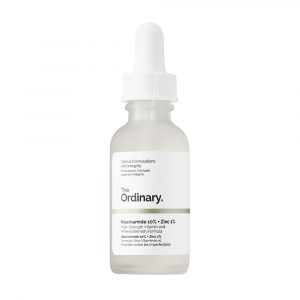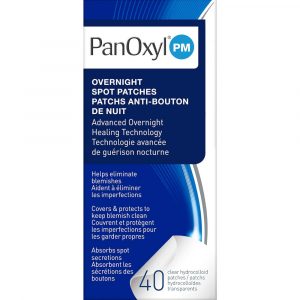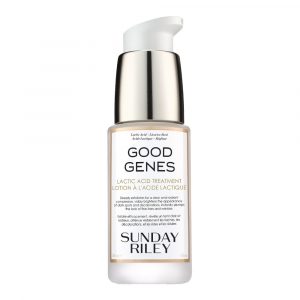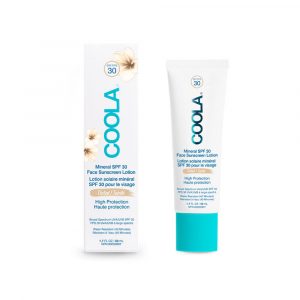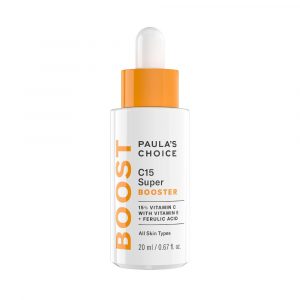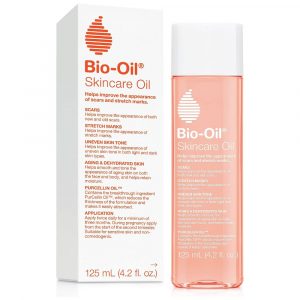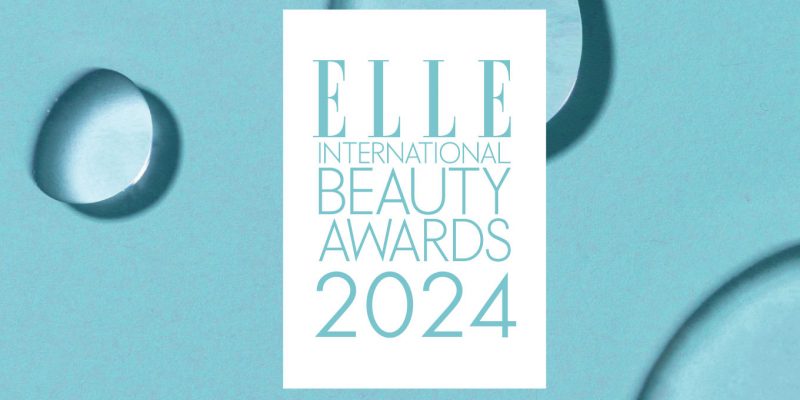Skincare
Every item on this page was chosen by an ELLE Canada editor. We may earn commission on some of the items you choose to buy.
Our Beauty Director’s Guide to Pregnancy-Safe Skincare
Plus, expert tips for dealing with pregnancy acne, stretch marks and more.
by : Katherine Lalancette- Nov 16th, 2023

Katherine Lalancette
Before we begin, I just want to say, if you’re reading this and currently expecting, congratulations! I know the road to a baby isn’t always easy (it certainly wasn’t for me), so my heart is full at the thought of your little miracle.
One of the first things I did after finding out I was pregnant (apart from taking two more tests and kicking my three coffees a day habit), was comb through my skincare stash. As a beauty director, part of my job is trying out as many products as possible to let you, dear reader, know what’s worth it and what isn’t. But as soon as those two lines showed up, I knew I had to start being extra mindful about what products I put on my skin.
Part of that is, of course, because some ingredients are off limits during pregnancy. The two main ones are salicylic acid, due to the theoretical risk of salicylate poisoning to the baby, and vitamin A derivatives like retinol and retinoids, due to the risk of teratogenicity to the baby, which can cause defects such as a misshapen head or heart abnormalities, explains dermatologist and founder of Toronto’s Dermatelier on Avenue, Dr. Renée Beach.
But take a gander on Google and you’ll quickly encounter a much lengthier list of actives purported to be unsafe. The thing is, there isn’t a whole lot of research that’s been done on the matter since pregnant people are seldom included in studies for obvious safety and ethics concerns. So at the end of the day, a lot of it comes down to what you’re comfortable with.
The other factor to consider is your skin’s needs, which can change drastically with those ever fluctuating hormones. “Each person’s skin pregnancy journey is different,” says Dr. Beach. “In general, skin can become more sensitive and flush more—this is due to growth factors and increased nerve tissue. Oftentimes, people find that they have some acne earlier in the pregnancy, but then have that ‘pregnancy glow’ in later stages.”
Personally, my skin type seems to shift every other week. I’ve gone from angry cystic bumps to flaming scarlet cheeks to scaly skin all over. (It seems sometimes acquiring that proverbial glow takes a little work.) All that to say, I’ve become quite adept at dealing with the many skin scenarios that can present themselves when growing a human. Here’s what I’ve learned over the past few months.

What’s the deal with pregnancy acne?
The main culprit here is usually an excess of sebum, which can occur when the body produces greater amounts of certain hormones. This is most common in the first trimester, though I experienced it in the early weeks of my second trimester as well. So what can you do? As mentioned previously, salicylic acid, one of the most common acne-fighting ingredients, is a no-no during pregnancy, so you have to turn to alternatives. Benzoyl peroxide, another popular pimple fighter, is generally considered safe, though Dr. Beach admits it’s a bit controversial. Other options include glycolic acid, an alpha-hydroxy acid, and azelaic acid. You can also see a derm to get a prescription for clindamycin, a topical antibiotic, or erythromycin, either taken orally or applied topically.
I, for one, got freaked out by all the stuff I was reading online, so I decided to play it super safe with The Ordinary’s Niacinamide 10% + Zinc 1% Oil Control Serum. The product kept coming up in my search for a pregnancy-friendly acne treatment and I found it worked really well, nixing excess oil and healing blemishes. I also loved that it was only seven bucks!
Price: $6.60
My other go-to was unmedicated pimple patches (a lot of them are infused with salicylic acid, so make sure to get ones that are made of plain hydrocolloid). They dramatically shrink pimples while spreading up healing. They also help you resist the urge to pick, which is especially important during pregnancy as post-inflammatory pigmentation, i.e. dark spots left behind by zits, may be more likely.
Price: $11 (for 40)
What anti-aging skincare products can I use during pregnancy?
Since you can’t reach for retinol, the gold standard anti-aging ingredient, or get in-clinic tweakments like Botox or fillers, you need to seek out other ways to stave off signs of time during pregnancy. Vitamin C, particularly L-ascorbic acid in a 10 to 15 percent concentration, is a great option, says Dr. Beach. The antioxidant fights off free radicals, “layers well under sunscreen and definitely provides a brightening effect for all skin tones.” There’s also bakuchiol, a botanical that’s gained popularity as a gentler alternative to retinoids, as well as that previously mentioned glycolic acid, which is safe to use while pregnant or nursing.
Since my skin’s been more sensitive than usual, I decided to turn to lactic acid, an AHA that’s a bit easier to tolerate than glycolic. My forever favourite is Sunday Riley’s Good Genes. It’s phenomenal at evening out skin’s tone and texture, and just makes you glow like you wouldn’t believe. It’s so good, I’ve barely missed my usual retinol.
Price: $115
How can I treat dark spots and melasma during pregnancy?
Hyperpigmentation during pregnancy is really common. In fact, a study found between 50 and 70 percent of women will develop melasma, dark patches known as the “the mask of pregnancy.” You might also notice darkened skin on other areas of the body such the areolas or the “linea nigra,” a line extending over the centre of the belly.
Once again, it’s all because of changing hormones, particularly a surge of estrogen and progesterone, which can increase melanin production. Genetics play a role, as certain skin tones are more prone to hyperpigmentation, as does sun exposure, which can exacerbate the phenomenon.
So what can you do? The first step is prevention, namely wearing a hat with a brim that’s at least five centimetres wide if you’re out in broad daylight, avoiding peak hours of UV radiation and, of course, being super diligent about sun protection. Dr. Beach recommends choosing an SPF containing iron oxides, which are usually found in tinted formulas. “This actually blocks visible light, the type that can cause dyspigmentation like melasma.” The pro also notes that mineral (as opposed to chemical) sunscreens are more protective of UVA rays, which come through windows.
My top picks have been EltaMD’s UV Clear Tinted Broad-Spectrum SPF 46 as well Coola’s Mineral Tinted Face SPF 30. Both are fragrance-free mineral formulas containing iron oxides and feel really light and airy on skin.
Price: $46
That’s the prevention part, but what about what to do if you do develop hyperpigmentation? While pregnant, things that can help include azelaic acid (you can get a prescription for a 15 percent preparation known as Finacea gel), glycolic acid chemical peels, a vitamin C serum with a 10 to 15 percent concentration and a five percent glutathione cream. And then, after pregnancy, you can see a dermatologist for a prescription for tretinoin cream (a form of retinol), tranexamic acid or a five percent cysteamine cream (a skin lightening treatment).
Every morning, I’ve been smoothing on Paula’s Choice C15 Vitamin C Super Booster, a 15 percent vitamin C serum spiked with vitamin E and ferulic acid, two other potent antioxidants that have been shown to enhance the benefits of vitamin C. Not only does it bolster the effects of my SPF, thus further preventing melasma, but it also helps to fade existing hyperpigmentation.
Price: $76
How can I treat stretch marks during pregnancy?
Let’s cut to the chase: there’s nothing you can do to prevent stretch marks all together. In fact, it’s estimated that 50 to 90 percent of pregnant women will develop them before delivery. “They’re due to the dermal tissue stretching beyond its regular level of extensibility to accommodate the baby,” explains Dr. Beach. They’re completely normal (you’re making a whole person in there!) and often hereditary, so there’s really no point stressing out over them.
Some sources say gaining pregnancy weight slowly and steadily rather than quickly might help. Of course, your health and that of the baby are top priority, so always check with your health professional to make sure you’re meeting weight gain targets and getting all the nourishment you and your baby need.
So what about all those belly oils and stretch mark prevention creams? “I don’t know that belly oils and creams do anything, but they feel nice and I am for that,” says Dr. Beach. “Take care of your body always, but especially while growing a new human!” I couldn’t agree more, which is why I’ve been slathering myself in all sorts of decadent treats. Some standouts include Bio-Oil, a classic, Evereden’s Golden Belly Serum and Attitude’s Blooming Belly Stretch Mark Prevention Oil, a solid oil made with 99.6 percent naturally sourced ingredients. I like to apply one of these first and then “seal” in the moisture with a nice thick lotion like Bioderma’s Atoderm Intensive Baume. I often do this morning and night.
Price: $20
Now for what to do to lessen the look of stretch marks after pregnancy. “If the marks are red, then the use of a laser will help to fade the redness,” says Dr. Beach. If the marks are darker, then sometimes a five percent cysteamine cream can be applied. Benefits will be noted after four months of consistent use. Otherwise, microneedling can be performed to help stimulate collagen and tightening, says the derm.
Last words of advice
Much like parents will tell you that every stage, good (the sweet squeezing of your finger) or bad (the not so sweet sleepless nights), is temporary, know that so too are many of the skin side-effects of pregnancy. “If you’re glowing, enjoy every moment,” says Dr. Beach. “And if your skin is grisly, fear not. It will end and will all be worth it!”
Newsletter
Join our mailing list for the latest and biggest in fashion trends, beauty, culture and celebrity.
Read Next

Beauty
Kendall Jenner's Makeup Artist Mary Phillips Reveals the Secret to a Perfect Base
The queen of underpainting shares which 90s beauty trend she's loving.
by : Allie Turner- May 8th, 2024

Fashion
Spring’s Most Empowering Statement is a Carefree Pair of Legs
Get leggy with it.
by : Monica Ainley- May 8th, 2024

Life and Love
Have You Tried These Goodies for Sexual Wellness Yet?
Consider this your sign that it’s time to improve your sexual well-being—a key part of your overall health.
by : ELLE Canada- May 7th, 2024

